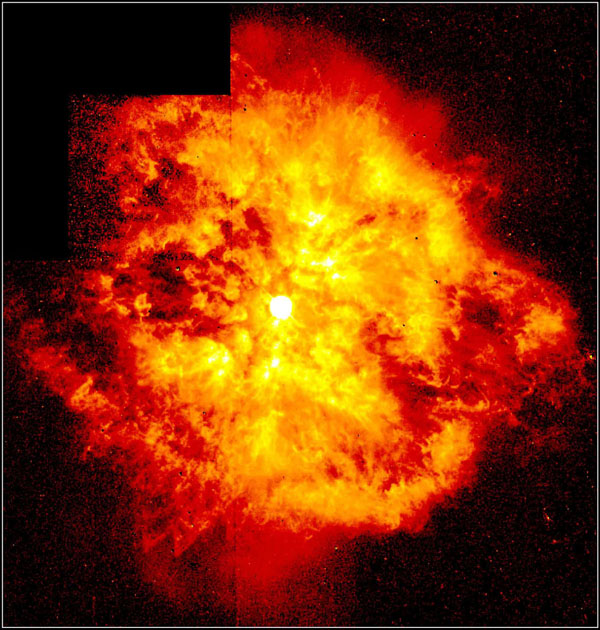Giant Branch
When stars leave the main sequence, they begin burning hydrogen in an expanding thin shell around the core. Helium ash falls onto the core, increasing the mass and density of the core. burning shell grows in radius increasing the outward pressure. The outer layers of the star swell and cool, becoming a red giant. The red giant phase evolves in the thermal time scale.
Helium Flash
Stars having mass less than undergo helium flash (stars with mass greater than
do not have He flashes). During the Helium flash, star undergo following changes.
1. Core density increases as Helium as from the burning shell falls on to the core.
2. Electrons starts to degenerate as . Since this pressure is independent of temperature. Temperature increases
without increasing pressure.
3. The hydrogen burning shell makes more ash, the Helium core continue to grow up.
4. Temperature rises to 100 million K, mass of the degenerate core 0.6 M_o He fusion suddenly begins. Temperature and Helium burn rate increases until T ~ 300 Million K. For a few minutes energy production is about 100 times the total energy production of the Milky way galaxy.
5. Most of this energy is used in puffing up the core. Core begins to expand, density begins to drop, causing to stop electron being degenerate.
6. Outside of the star contracts as degeneracy stops. The surface temperature increases. Star becomes the yellow giant.
Horizontal Branch
1. On the horizontal branch, star burning Helium in the core and Hydrogen in the shell.
2. Star becomes hotter and smaller, surface temperature increases,total pressure decreases because of the Helium flashes.
3. In this phase, luminosity remains constant called horizontal branch.
4. The energy released by the Helium flash rises the core temperature to the point where it is no longer degenerate. It thus starts to behave again as an ideal gas so can expand and cool.
Pulsating Stars
As stars move across the horizontal branch (Helium core and H shell burning, luminosity almost constant because of rise in temperature and decrease in surface area) some of them begins to pulsate: change in size, growing bigger and smaller repeatedly and their luminosity changes in a periodic way. There are two important types of pulsating stars
Cepheid variable: They have short period luminosity relation and are very regular period from days to month. They are population I, polaris, bright and also known as standard candle.
RR Lyree star: They show periodic luminosity relation and have very regular period from hours to days. Its population II stars and are in Globular cluster. They are dim.





